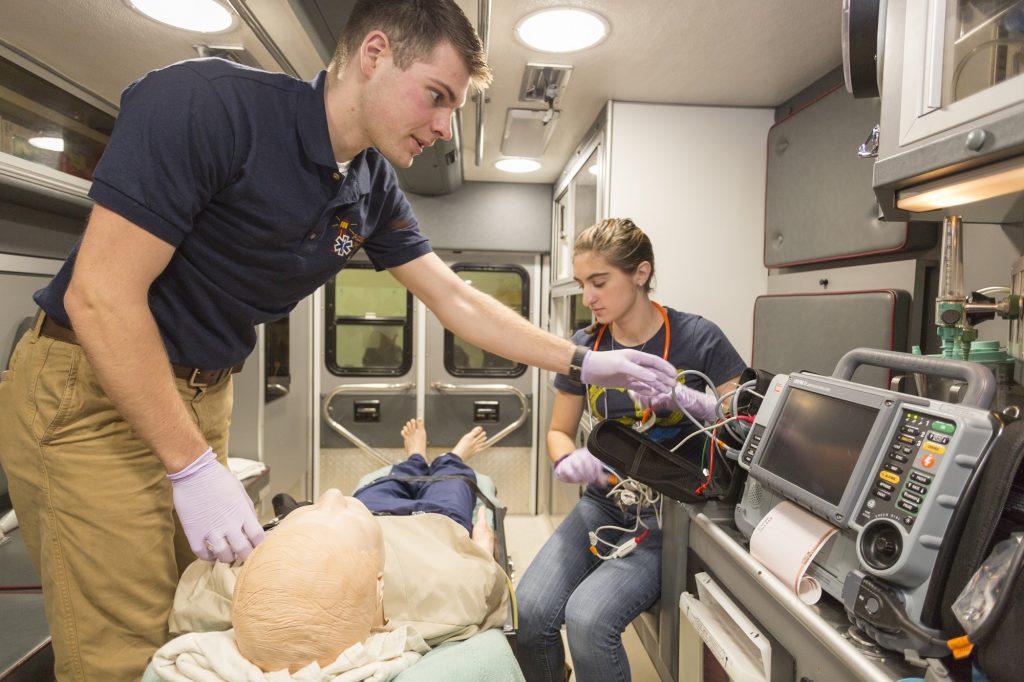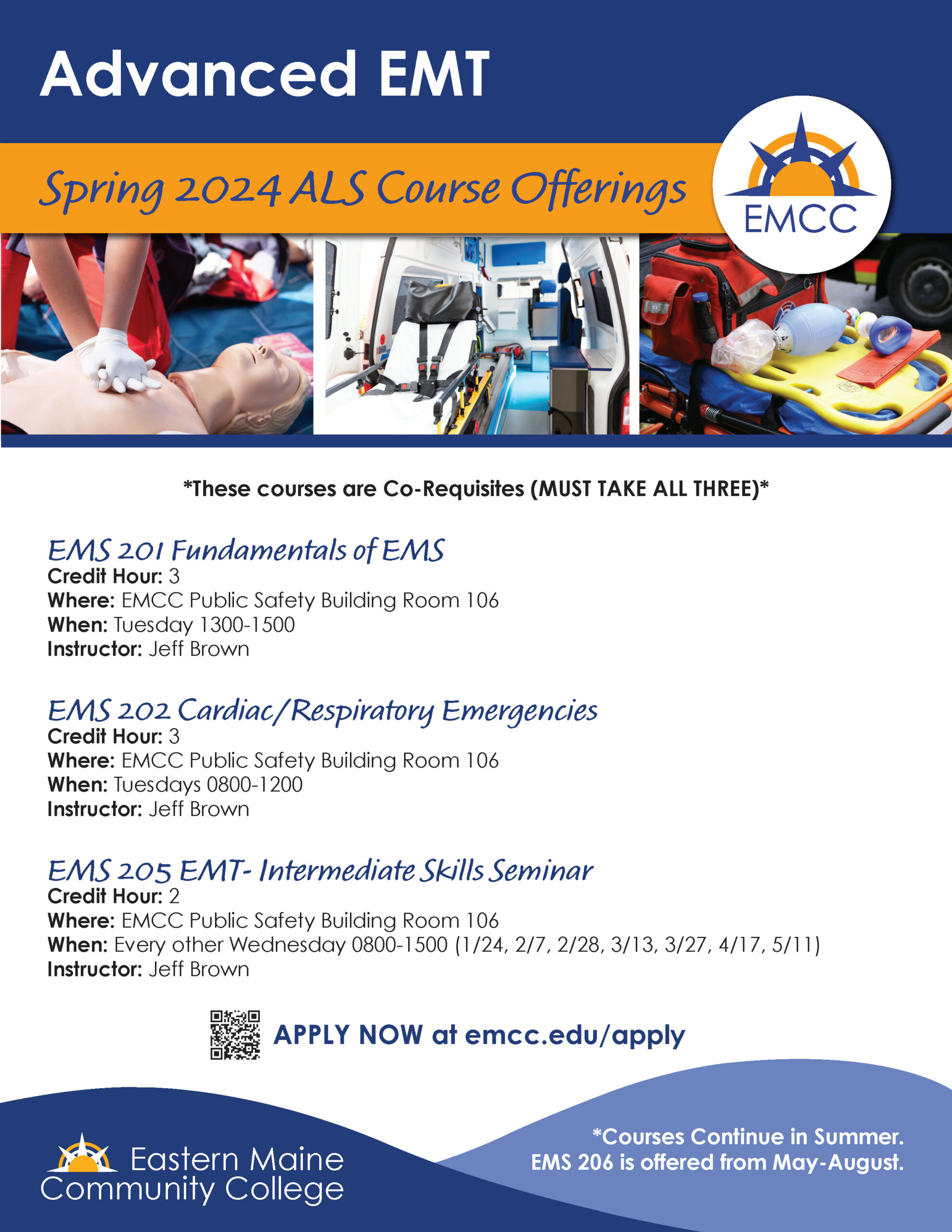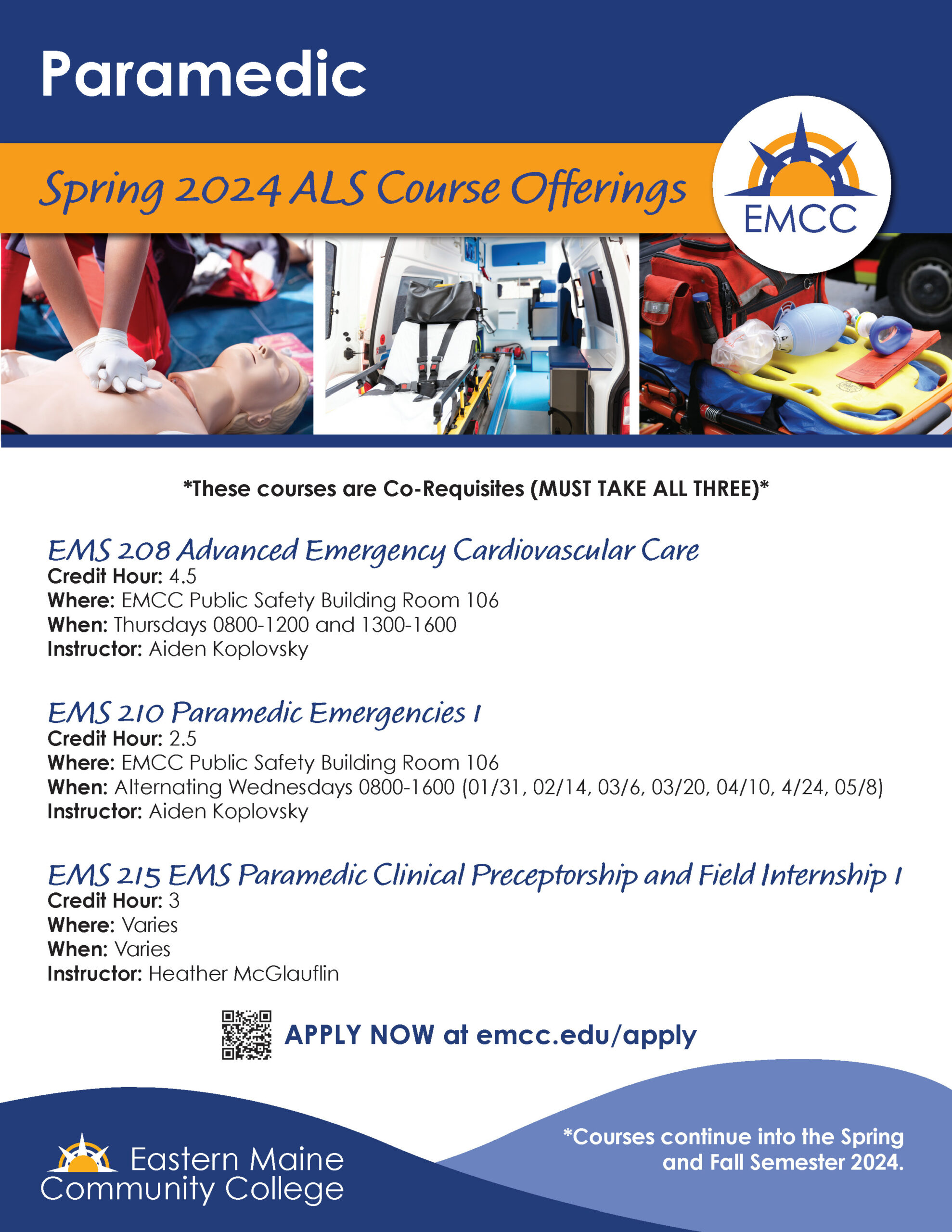Emergency Medical Services

Prerequisites Required for Certificate or Degree Program
High school level Algebra I and a science course with lab is required for admission to either the certificate or associate in applied science degree in Emergency Medical Services. More information about the application process and prerequisites can be found HERE.
The Emergency Medical Services (EMS) Technology program provides the opportunity to earn a certificate and/or an associate in applied science degree to individuals who work with ambulance services, rescue squads, fire services and other first responder organizations. The program augments a nationally recognized technical core with general education courses and is typically taken on a part-time basis over three to four years due to the length of AEMT (6 months) and Paramedic licensure classes (9 months).
- Emergency Medical Technician (EMT) – Next offering August 2023!
- Advanced EMT (AEMT) – Next offering January 2024!

- Paramedic – Next offering January 2024!

Click here to view program pass rates for 2018-2021
Awards of Completion are given at three levels as students complete technical courses and are prepared to sit for State Licensure. These three Awards of Completion are:
- Award for EMT. EMS131 is required.
- Award for Advanced EMT. EMS131, EMS201, EMS202, EMS205, and EMS206 are required.
- Award for Paramedic. All Advanced EMT courses as well as EMS208, EMS209, EMS211, EMS212, EMS213, EMS214, EMS215, EMS216, and EMS217.
Emergency Medical Services Technology establishes the educational path to rewarding careers for Maine Licensed EMT and EMT-Paramedics.
Learning Objectives
Graduates with the Associate in Applied Science Degree in Emergency Medical Services will function, following completion of the State and National Testing Requirements, as entry-level paramedics for ambulance and rescue squads with the following skills:
- Cardiac skills including cardiac pacing and team efforts in resuscitation.
- Use of defibrillators and EKG machines.
- Medical administration.
- Preparation for environmental and psychological emergencies.
- Labor and delivery.
- Care of the neonate.
- Airway management.
- Chest decompression.
- Cricothyrotomy.

